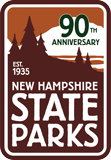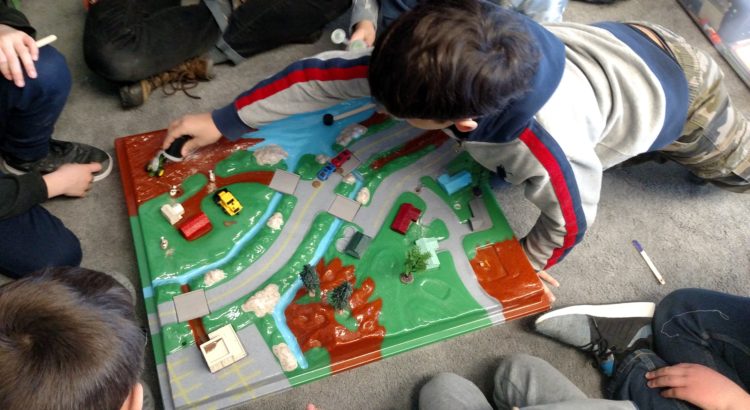By: Xandri Clifton, 2019 Student Conservation Association’s New Hampshire AmeriCorps Member
If you are like most of the population, in terms of knowledge of water pathways on geological features, you may not know what a watershed is. A watershed, in the simplest definition I’ve come up with, is the area of land where any precipitation on that area will eventually end up in the same spot, be that a lake, river, or other body of water. In New Hampshire, there are 18, according to the New Hampshire Department of Environmental Sciences. 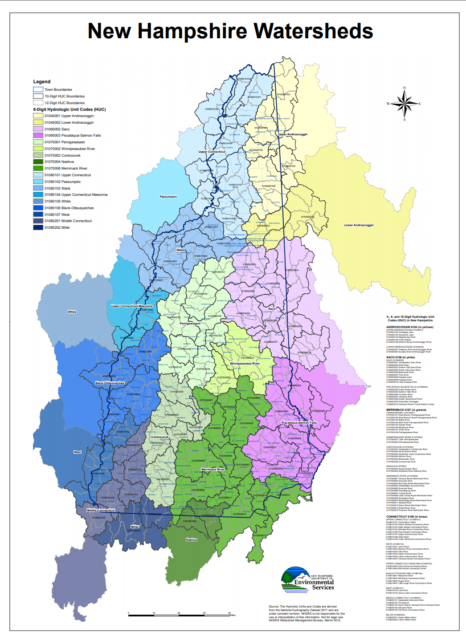
It is somewhat an abstract concept because, by virtue, water is not still (well…minus icebergs and whatnot). So, seeing as I struggle to explain this over written text, it is a difficult concept to explain in our classrooms. Fortunately, we had addition to our education supplies this year! Our newest education kit is a 3D model of a section of land representing a watershed, complete with toy cars, tiny cows, and a twisting river.
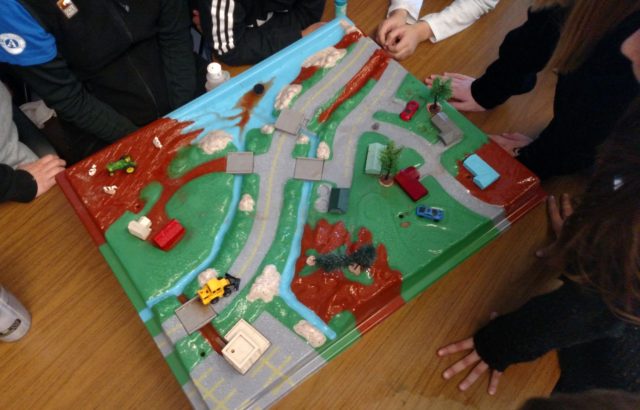
I’ll admit, I was a bit skeptical when we were shown this model. I wasn’t sure how a bunch of toy pieces was going to help kids understand the concept of runoff into water sources. I expected that kids would either be either uninterested or too focused on the ‘toy’ aspect of the model. While the small pieces did get kids a little rowdy, they picked up a lot of what I was saying and what they were seeing. To explain this better, I should summarize how we use the model: first we explain that this is a scaled down version of a watershed (which had already been defined), and that we were going to pretend like this was our little town to design, with some caveats—mostly having to do with where things would logically go (like the cow near the farm, etc.). After putting all the pieces down, we added some ‘pollutants’ that might come from different areas. With the farm area, we put down ‘pesticide’, ‘fertilizer’, and ‘manure’ (all represented by kid- and nose-friendly substitutes). Then, we had a huge rainstorm over our town (via spray bottle action) and watched what happened to all of the various products we had put down on our land, or had leaked from vehicles (Spoiler alert: they all ended up in our lake/ocean).
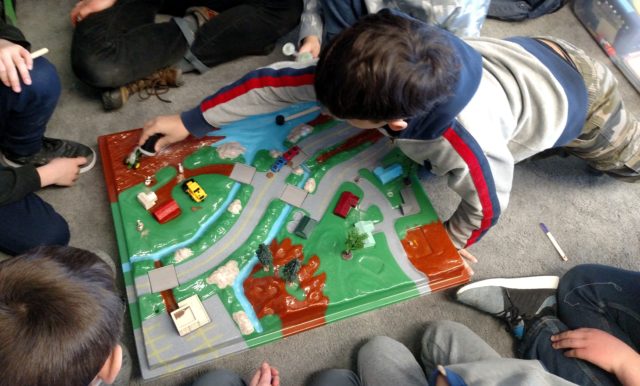
This ended up being a great tie-in to last week’s lesson on trees! We taught about how trees absorb water from the ground, which got some students thinking about our pollutants effects on trees. We also got to talk about the way trees, wetlands, and other plant material are great at filtering water. This was our fifth lesson of nine, and I can see so much growth in how our students think about the world outside!
